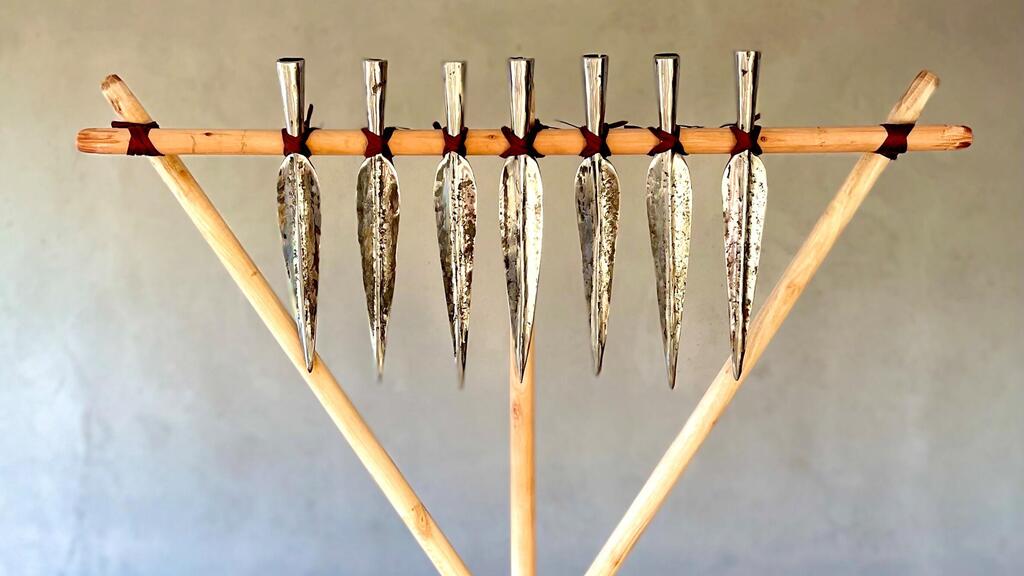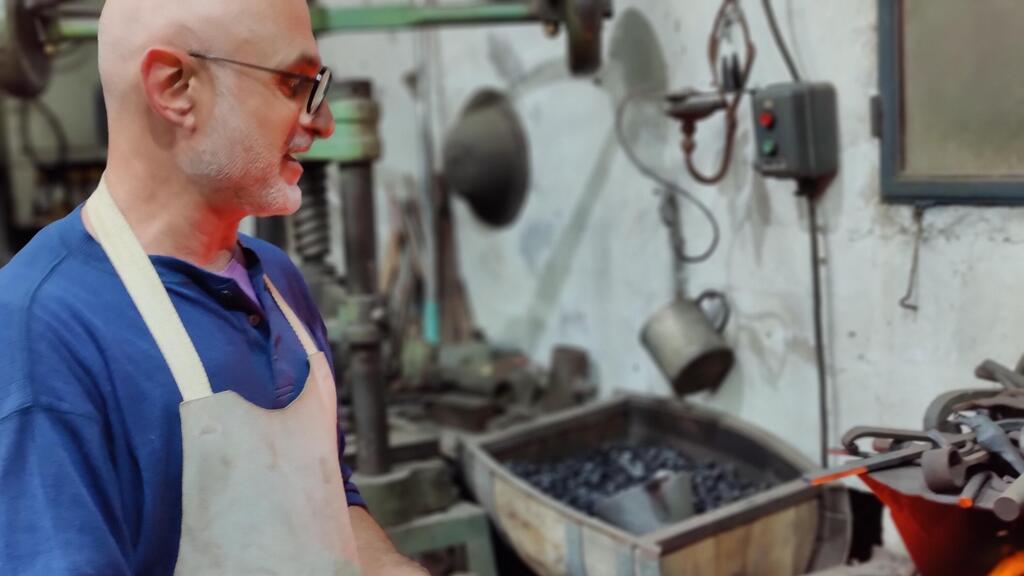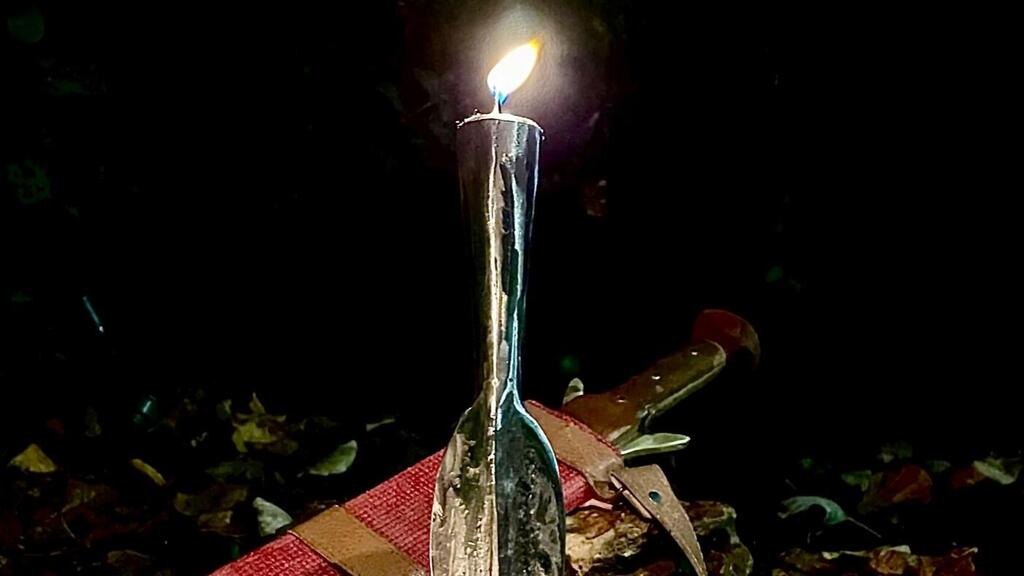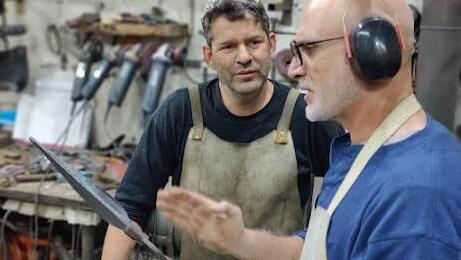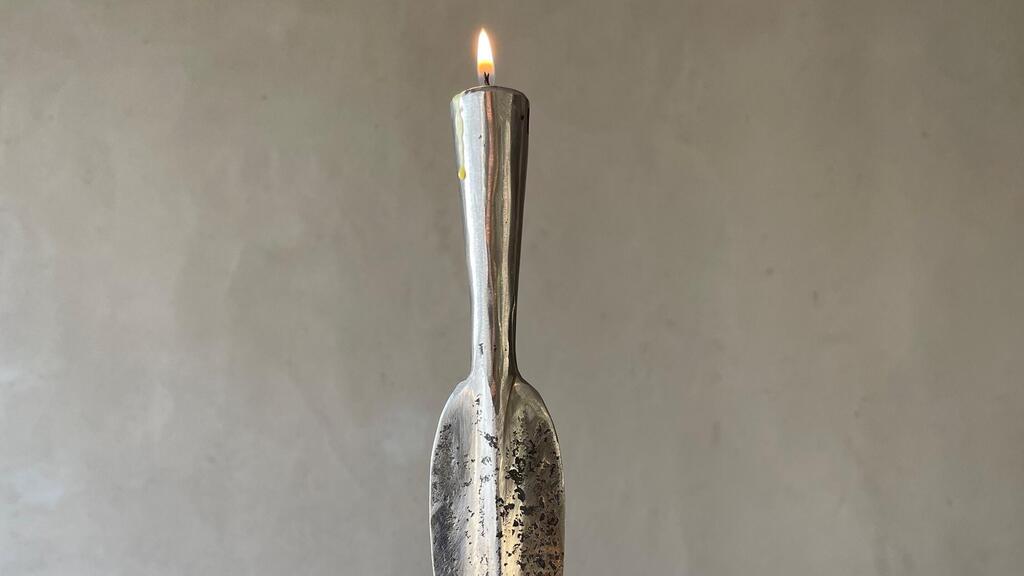Getting your Trinity Audio player ready...
Dr. Ido Hebroni, a historian and faculty member at Shalem College attempted to reconstruct the menorah used by the Hasmonean dynasty in Judea during their revolt against the Greeks in the second century BCE.
Hebroni says Both Hasmonean and Greek forces fought using long spears, with Jewish forces reportedly using the butt of their spearheads in order to fill them with oil and light them as a replacement for the original menorah.
Aiding Hebroni with his research was Yossi Gur Aryeh, an expert in ancient iron forging techniques who also owns his own smithy in a West Bank settlement .
Hebroni, who lectures on ancient Hebrew, Greek, and Roman texts, first became interested in smiting when he looked into a text from the third century, in which two Jewish sages argued about the stage during which a weapon is considered to be complete.
One argued that the weapon would be complete after it is removed from the smithy, while the other claimed that it will only be complete, once it has been entirely doused in water.
“Despite many pondering this question,” Hebroni says, “no one took a deep look into the processes themselves. To figure it out, I went to study blacksmithing and fell in love with it. Forging iron tools today is done with fire, anvil, and hammer, in an almost identical manner to that of 2,000 years ago. I then published my results in an academic paper.”
Hebroni adds that prior to writing his paper he came across an article written by Prof. Daniel Sperber, in which he used ancient Hebrew texts to deduce that the Hasmoneans built their first menorah using their spearheads. “I was intrigued and the skills I acquired pushed me to try and recreate it.”
“In order to prepare, I learned what spears looked like during the Hasmonean dynasty and joined with Yossi Gur Aryeh to create the spearheads from which our menorah was built, using the same techniques used at the time,” Hebroni explains .
He says that while the Hebrew texts from the time, say the Jewish fighters made the menorah from “stakes,” Sperber wrote in his article that it is hard to assume the literal meaning of the word due to the heavy fighting that took place during the period, and that the text probably referred to a weapon of sorts.
“He also said that there’s evidence of Greek soldiers using the butt of their spearheads as a base for candles. The spearhead’s butt is hollow, and you can stab the point into the ground and fill the end with oil to use as a candle,” Hebroni says.
According to Hebroni, “the same custom is also mentioned by Aristotle when he talked about a worthy leader simulating both a spearhead and a candle, meaning the philosopher believed a leader should be just and lead the way forward.”
“Ancient Hebrew texts talking about Rosh Hashana say that a menorah should not be constructed out of wood as was done by the Hasmoneans,” Hebroni explains. “The first who thought about the menorah and the spears was Rabbi David Cohen, who wrote that the Hasmonean most likely used their weapons to construct the menorah during the revolt.”
When asked why the Maccabees didn’t use the original menorah and oil that was present in the Second Temple, Hebroni said: “According to the book of Maccabees, Antiochus IV looted the temple therefore there was no menorah. Greeks also used the oil in the temple to sacrifice to other gods, making it forbidden for use by the Jews.”
When asked how come no one thought about the use of spears to construct the menorah before, Hebroni said: “The connection was made due to Jews returning to their ancestral land, where they could think of Hanukkah and the menorah not only in the religious sense but also in other aspects, like the military one.”
Hebroni says he believes that many in Israel are mistaken in thinking the revolt was a religious war. “It wasn’t a war against the Greek culture, because while the Hasmonean kept the Jewish tenants, some of them accepted Greek culture and language, participated in international politics, and fought alongside Greek armies, even being mentioned in other ancient sources.”
When asked about why Antiochus IV angered the Jews so much, Hebroni explains. “Following the death of Alexander the Great his empire split into several warring kingdoms. Antiochus IV joined a Jewish group in Judea who was fighting against Jewish symbols, and so placed a statue of Zeus within the temple in Jerusalem.”
“He also prohibited Jewish prayers and demanded Jews sacrifice animals they considered tainted. This was the moment the Hasmonean dynasty decided to revolt,” Hebroni says.
Despite the revolt considered a religious war, Hebroni explains that this wasn’t exactly the case. “In that kind of war, there are usually two sides attempting to force religious beliefs on the other side. The Jews had no interest in forcing their religion, and revolted to protect their religion from outside threat following the religious prohibitions by Antiochus IV’s.”
When asked how come the prominent Jewish sages in the Middle Ages focused more on the miracle of the lasting supply of oil instead of the efforts of the Maccabees, Hebroni says, “the writings of the Jewish sages were written some 800 years after the Hasmonean dynasty, after a long period of the Jewish diaspora.”
“Hanukkah marks above all a military victory, but this seemed meaningless to Jews living apart from each other hundreds of years after the event,” Hebroni explains.
“The Jewish tradition at the time celebrated the eight days it took to consecrate the temple after the revolt, and so the sages looked for meaning in the tradition. They decided that the oil that was in the menorah lasted for eight days, which came to define the idea of a victory against the odds with divine intervention.”
“Judah Maccabee was a great military strategist who defeated a larger army that fought in tight formations using clever flanking techniques,” Hebroni adds. “But the military victory meant little during the diaspora, and so the fact the victory was achieved by God took precedent. It was an attempt by the Jewish sages to perpetuate the holiday so that Jews have a reason to continue celebrating it even without a state of their own.”



